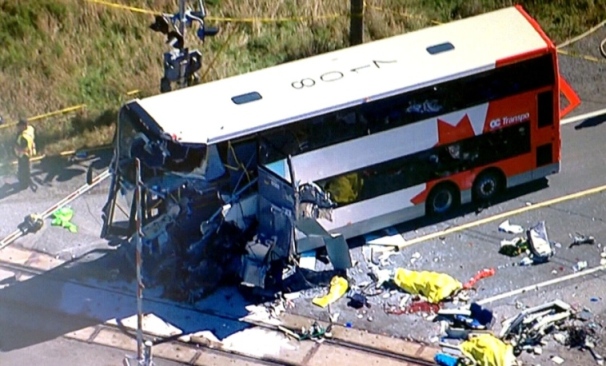One would assume that being in a bus accident is compensated in the same manner as any vehicular accident. But, they would be wrong. When you are injured on a bus, the compensation for any injuries you sustain is very different from other types of vehicle accidents.
When you get onto a bus to go somewhere, you have the presumption that you are covered should anything happen, and you would be right. Bus transportation carriers are required by law to have a specific amount of limited liability. So, what is the problem? When you are injured while on a bus or transportation service, passengers are protected by much weaker safety rules than any other type of public transportation.
Bus transports also afford their passengers less insurance compensation in the event of injury or death, according to those who handle bus crash suits and insurers. In 1982, a five-million-dollar insurance limit was established under deregulation during the Reagan Administration for the bus industry. Up until that point, each passenger was only required to be covered by a $5,000 policy limit should they be injured, maimed, or even killed.
Five million dollars might sound like a lot of money, and it was in the eighties, but fast forward decades and inflation, and the money required to insure a vehicle that can house hundreds of people, is not enough to sufficiently compensate those who are injured in a bus accident. Far less than the coverage required for an airplane, or even Amtrak, the survivors of a bus crash are often left with little recourse or cover when they are injured.
Most bus accidents are not severe enough to require more than $5 million to compensate victims. But, when there are major accidents that result in loss of life or grave injuries, that type of money isn’t enough to help just one injured victim, let alone tens or hundreds who acquire a maritime accident attorney. It is simply not enough money to cover everyone who can find themselves disfigured, injured, or the lives of their loved ones, lost.
The Federal Motor Carrier Safety Administration, realizing the subpar standard of coverage, has tried to increase the minimum to no avail. In April of 2014, they reported to Congress that the amount of financial coverage was not enough to cover injured victims and that the minimums should be raised to ensure that passengers are better served and compensated.
The report surmised that although $5 million was enough in the eighties, after calculating for the current day, that figure is more likely close to $22 million. Not only addressing the bus industry, motor freight and general cargo carriers, were also discussed as being under-covered and leaving people vulnerable in the event of a major collision.
The report recommendations have been met with resistance from transportation industries who stand to increase their budget exponentially by taking on the additional insurance coverage requirements. Many insist that their premiums are oppressive enough as it is, often costing more than $15 thousand for just a small transport vehicle yearly.
Many attorneys believe that increasing the minimum requirements may not only protect passengers, but it may help to weed out smaller transportation carriers who shouldn’t be operating anyway. Many are not safe enough, notwithstanding the insurance coverage. Therefore, increasing the premiums may help to make the entire industry safer.
Some in the insurance industry believe that the minimum requirements are enough considering that the risk of accidents in the bus industry has been historically low comparatively. Spare a couple of major accidents; there have not been many litigation suits or instances where passengers are not compensated. Raising industry standards to meet just a few outliers doesn’t seem to be an appropriate way of addressing the transport industry.
Statistics show that about 40 passengers are killed on buses every year, and the coverage has been enough to compensate fairly. The only time that the system gets overwhelmed is when there is a major accident like the recent incidences in the Bronx or Palm Springs. But, those types of incidents are few and far between. Also at issue, are the facts that 20-40% of the compensation recovered typically goes to litigators instead of the passengers who need it.
Whether legislators will make increases to insurance premiums for bus transports is very unlikely in the near future. But, a source of continual debate is that if another major accident happens, it may further the cause.
